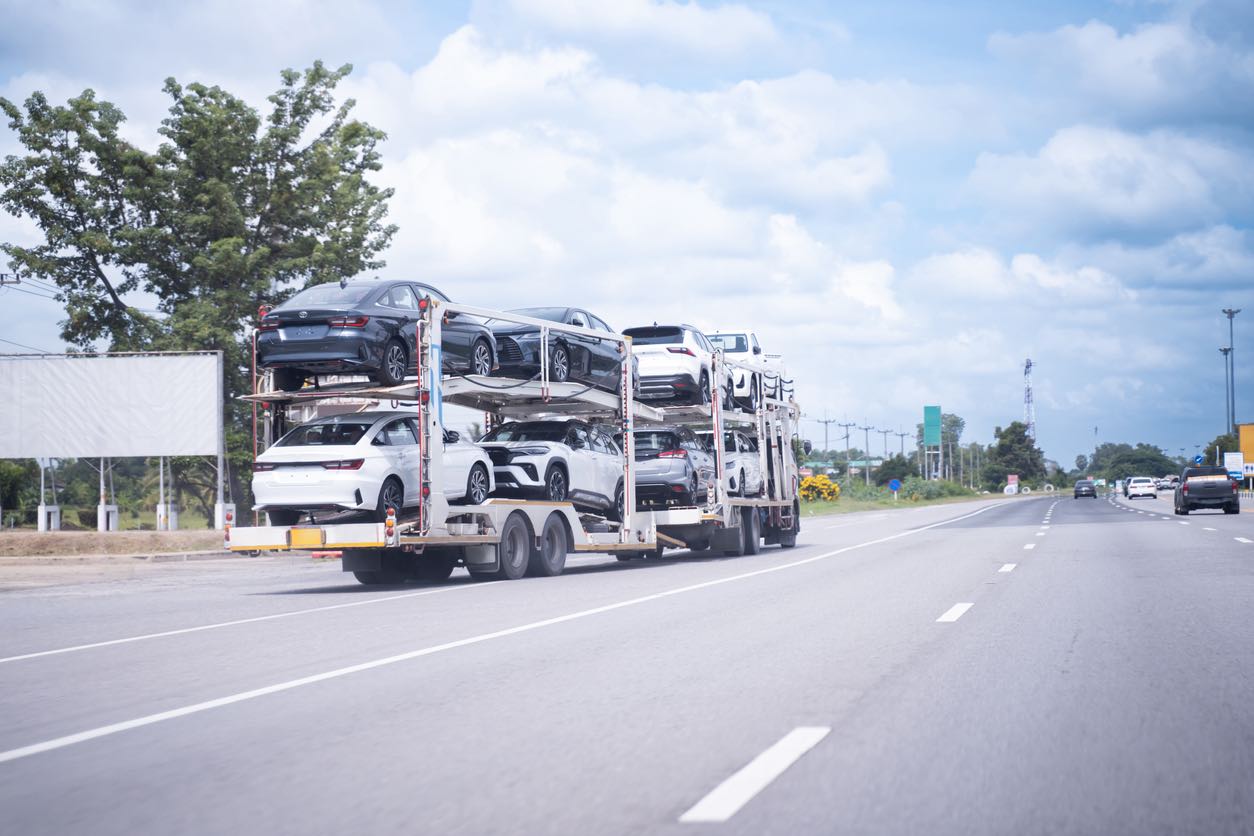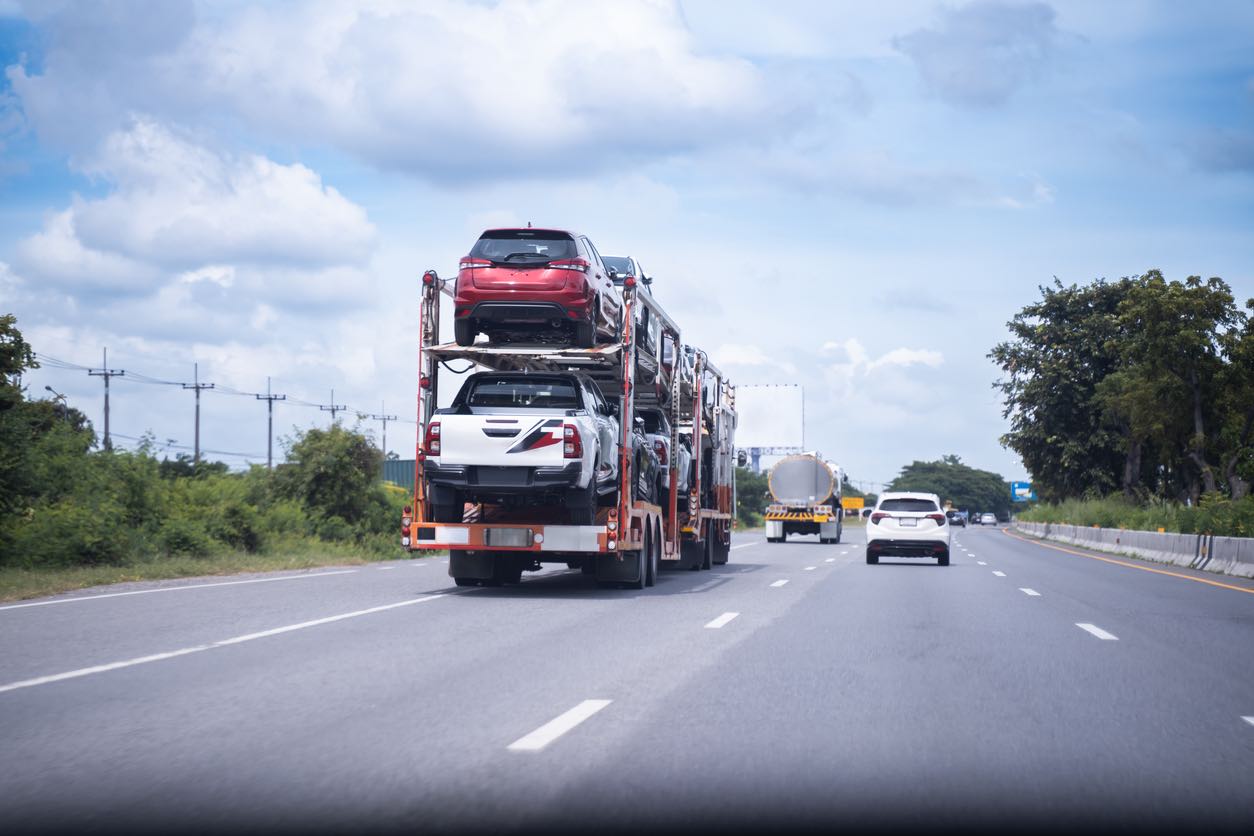Moving across state lines, relocating across the state or transferring cross country has its own set of difficulties, especially when it comes to shipping your car. This thorough guide is intended to lead you through the several choices, arrangements, and factors to make sure your car gets to its destination quickly and securely. Every element is critical to a seamless transport, from choosing the best transportation provider to comprehending the subtleties of various shipping methods. Whether you’ve shipped cars before or not, this resource is sure to provide insightful information that will simplify your trip by combining professional recommendations with doable guidance.
With a plethora of alternatives and circumstances impacting your selection, the world of interstate automobile transportation might be complicated. You will be guided through the procedure step-by-step by this guide, which also highlights important factors like scheduling, cost, and safety precautions. We go into the specifics of enclosed versus open carrier shipping, the value of insurance, and how to get your car ready for the journey. Not only do we want to educate you, but we also want to give you the power and assurance to select the best possible solution for your vehicle shipping requirements. After reading this guide, you should have all the knowledge and resources needed to make sure your car’s interstate transfer goes as smoothly and stress-free as possible, laying the groundwork for a worry-free and successful relocation.

Choosing the best transport option is essential before starting the interstate automobile shipping journey. Your decision affects not just the protection and safety of your car but also the nature of the whole shipping experience. Making an informed choice requires having a thorough understanding of the various alternatives, each with its benefits and drawbacks. The best technique for shipping your automobile from one state to another will be revealed when we examine different approaches.
Auto Transport Companies are the Hassle-Free Choice
Stress-Free Experience: These businesses offer a smooth and effective automobile shipping service since they are experts in the field. They handle everything, from managing paperwork to figuring out logistics.
Safety and Security: Make sure your automobile is in good hands by selecting interstate auto moving companies who are insured and licensed for such tasks. A trustworthy source for confirming a company’s qualifications is the website of the Federal Motor Carrier Safety Administration (FMCSA).
Varied Service Options: To accommodate a range of requirements and price points, many vehicle transport companies provide a variety of shipping choices, such as enclosed or open carriers.
Moving Companies Offer Convenient Bundled Services
All-in-One Solutions: Some moving companies include automobile shipping in their moving services, which is great for people who are relocating entirely. This option may save you money by combining all of your moving needs into one, but it’s not necessarily the best value because they’ll have your car moved by a third party, frequently at a higher cost.
Reliability and Trust: Choose moving companies who have a solid track record in both household and vehicle transportation. Higher levels of service quality are guaranteed by this combined competence.
Self-Transport for the Hands-On Approach
Direct Control: You have greater authority over the shipping process when you use this approach. You are in charge of the travel, whether you choose to drive the car yourself or hire a driver.
Things to Think About: If you decide to hook your automobile to a moving truck, be ready for new duties and difficulties, such handling a bigger vehicle. Although they are convenient, professional driving services can be expensive and increase your car’s usage.
Refer to our previous blog post Driveaway Services Explained – Your Ultimate Guide to Vehicle Transport for more information on the self-transport approach.
Alternative Transport: Unique Solutions for Specific Needs
Shipping by Train or Boat: Shipping by rail or boat can be a practical choice in some situations, such as moving to isolated locations or along particular routes like the East Coast corridor. These techniques provide specific solutions even though they are less popular.
Cost and Availability: The pricing and availability of these methods may vary. They may also be limited. It’s crucial to investigate certain suppliers and routes to make sure they meet your needs.
To sum up, the optimal method for transporting an automobile over state lines depends on striking a balance between your requirements, financial constraints, and personal preferences. Every mode of transportation has its own benefits, whether it be the all-inclusive services provided by vehicle transport companies, the packaged ease of moving companies, the direct control of self-transport, or the innovative solutions of alternative transport. Your choice should be in line with your requirements for convenience, affordability, and safety to guarantee a hassle-free and easy auto shipping process.

Selecting the best auto transport business is essential to guaranteeing the effective and secure transfer of your car from one state to another.
Comprehensive Analysis to Make the Best Decisions: Investigate the various car transport options in detail. Examine the finer points of each company’s offerings, including how they handle various car makes and models as well as any other services they could offer. Make use of reliable web resources to contrast these offerings, emphasizing the distinctive characteristics that distinguish each provider. At this point, it’s important to choose a provider that meets both your unique needs for transportation and your budget.
Examining Testimonials and Reviews from Customers: The opinions of previous clients are among the most trustworthy indicators of a vehicle transport company’s caliber. Examine internet reviews and forums, paying particular attention to remarks regarding dependability, client support, and vehicle handling. Examine the comments for trends, since these might offer priceless information about the company’s operating advantages and disadvantages. Keep in mind that a company with a plethora of positive reviews is likely to offer a service you can trust.
Verifying Licensing and Insurance: This step is extremely important for ensuring your vehicle’s safety. A reputable vehicle shipping company should possess the interstate transport license required by law; this can usually be checked on the Federal Motor Carrier Safety Administration (FMCSA) website. Adequate insurance coverage is also a non-negotiable thing. Verify if the business has sufficient protection against loss and damage during transit under its insurance coverage. The company should clearly explain what is covered by their policy by providing this information in a transparent manner.
Comparing Quotes for the Best Value: After you’ve narrowed down your options, you need to get quotes. Extremely low quotations should be avoided as they may indicate unstated costs or poor quality work. Instead, search for affordable prices that meet industry norms. Recognize that the best solution is not usually the least expensive one. It all comes down to striking the correct balance between affordability and service quality.
Assessing Customer Support and Communication: One important but sometimes disregarded factor is the quality of communication and customer service provided by an auto transport company. Communication must be straightforward and consistent from the first question to the last delivery. Assess the company’s responsiveness and helpfulness in responding to your inquiries. Throughout the transportation process, a company’s prompt response to your inquiries and updates demonstrates its dependability and commitment to your needs.
Examining Customization and Flexibility Options: Your needs and each car shipping are distinct from one another. Examine the company’s flexibility with regard to pick-up and delivery times, transport options (such as covered or open carriers), and their ability to meet any special requirements or worries you may have with your automobile. What distinguishes a customer-focused vehicle transport company is their ability to customize their service to fit your unique requirements.
If you carefully follow these guidelines, you can make sure that you choose an auto transport business that not only has a good search engine ranking but also draws readers in with the promise of high-caliber, dependable, and customized services. Keep in mind that the ideal method for shipping an automobile from one state to another is to work with a business that completely suits your unique transportation requirements.

Are you starting the process of shipping your vehicle from one state to another? Making sure your car is ready for transport may make a big difference in terms of both safety and effectiveness. This extensive checklist is designed to guide you through the necessary stages, ensuring a worry-free and seamless experience.
- The Ideal Fuel Level for Light, Safe Travel: Only fill up your car’s gas tank to a quarter full. This minimum quantity is adequate to load and unload the vehicle while lowering its weight, which enhances transportation safety and lowers shipping expenses.
- De-cluttering Personal Items is a Step Toward Compliance and Security: Remove any personal belongings and accessories from the vehicle. This complies with the regulations of the majority of vehicle shipping companies and also averts possible theft or loss during transportation. Eliminating extraneous stuff also lightens the vehicle, making transportation safer and more effective.
- Maintenance Inspection is Crucial to a Problem-Free Trip: Make sure that the car is in excellent operating order. This involves examining the battery’s condition, tire pressure, and fluid levels. A well-kept car lowers the possibility of delays and guarantees a seamless loading and unloading procedure. It’s important to take care of any mechanical problems in advance, particularly if driving your automobile is required for loading or unloading.
- Documentation is the Foundation of Professional Auto Transportation: Compile and arrange all required documentation. This contains your insurance papers and the bill of lading, an important document that details the shipping arrangement and any damages that have already occurred. Make sure that all documentation is current and easily accessible. Having all of your paperwork in order ensures that all legal and practical bases are covered, which streamlines the process and gives you peace of mind.
- Photographic Records are Your Protection Against Conflicts: Prior to shipping, take thorough pictures of the vehicle from a variety of perspectives. In the event of disagreements or insurance claims about damages sustained during shipment, this visual record of your car’s state prior to transportation may prove to be quite helpful.
- Turn Off Alarms and Anti-Theft Equipment to Prevent Needless Complications: Make sure that all automobile alarms and antitheft equipment are turned off to prevent any problems or interruptions during transportation. This is an important step because it guards against problems that can occur if these systems are inadvertently activated while traveling.
- Fasten or Take Out Loose Parts to Proactively Maintain Vehicle Integrity: Fasten or take away any unsecured components or unique add-ons for your vehicle, such mirrors, fog lights, and spoilers. By taking this precaution, you lessen the chance that these things may come loose while in transit and protect your car from any harm.
By carefully following this checklist above, you can ensure a smooth and effective moving procedure in addition to protecting your car. To transport your automobile from one state to another, keep in mind that careful preparation of your vehicle for the voyage is just as important as selecting the best shipping provider.

It’s critical to comprehend the pricing dynamics while deciding how best to transport an automobile from one state to another. The cost of transporting an automobile is a variable number determined by several important factors rather than a fixed cost. To help you better understand what to anticipate financially, let’s examine each area in detail:
An Important Aspect of Cost is the Transport Type
Open Carrier Transport: The most popular and reasonably priced choice. Your automobile will be hauled outside in the open on a big truck with other cars. This option offers an excellent mix between cost and safety, making it perfect for regular vehicles.
Enclosed Carrier Transport: When you choose an enclosed carrier, your automobile will be transported in a covered truck, which provides better protection from the elements and flying debris. Although this option usually costs around 33% more than open carriers, it’s a prudent financial decision for pricey, luxury, or classic vehicles.
Distance and the Long-Haul Impact
The cost of shipping goes up as distance increases. Shipping to a nearby state will be less expensive than a cross-country shipment. It’s crucial to remember that even if per-mile expenses could go down as distance grows, lengthier journeys will still cost more altogether.
Type and Condition of the Car
Due to their size and weight, larger vehicles—such as trucks and SUVs—generally cost more to transport. Furthermore, expensive, exotic, or vintage vehicles may need special handling, which raises the cost. The extra work required for loading and unloading may result in extra fees if your vehicle is not operational.
Seasonality in Auto Shipping Means the Right Time is Crucial
Car transportation costs might change a lot from season to season. Peak demand periods, such as the summer and early winter, can result in higher pricing. On the other hand, shipping during off-peak times may result in lower costs.
Extra Thoughts Require Going Beyond the Fundamentals
Insurance Coverage: Verify the type of insurance that your shipping price includes at all times. For further peace of mind, you might need to get supplementary coverage, particularly for expensive cars.
Fuel Costs and Toll Fees: Variations in toll costs among states and fluctuations in gasoline prices can also affect the overall cost of shipping.
Pickup and Delivery Options: Terminal-to-terminal shipment, in which you drop off and pick up your automobile at predetermined locations, is sometimes less expensive than door-to-door service, which offers convenience.
All things considered, it’s critical to carefully consider these pricing considerations listed above while looking for the most affordable option to move an auto from state to state. You may ensure a positive auto shipping experience by making well-informed selections that fit your goals and budget by knowing what factors affect the pricing.

When the time comes for your automobile to move from one state to another, there are a few important things to do to make sure everything goes well. Ensuring your valuable asset is in the best hands is the purpose of this, which goes beyond a simple transfer. Here’s how to take full advantage of this crucial opportunity:
A Thorough Vehicle Inspection
- Start by having the driver perform a thorough examination of your car. This is a crucial step in making sure that any prior damage is recognized and documented. It’s important to safeguard your investment in addition to inspecting the vehicle. Spend some time inspecting the car and noting any dents, scratches, or other flaws. This thorough inspection protects against future disagreements about the state of the vehicle upon delivery.
- It is essential that you document this entire process. As an additional security measure, think about collecting time-stamped pictures or recordings. Should any disagreements emerge after transportation, this visual proof can be a very useful resource.
Bill of Lading is a Crucial Document
- The Bill of Lading (BOL) is a legally binding document that describes the condition of your vehicle, the terms of transportation (if you do not have an already signed contract for shipping the vehicle), and more. It’s not simply a formality. Examine every detail thoroughly before signing. This involves confirming the make and model of the vehicle, the dates and locations of the agreed-upon pickup and delivery, and any unique instructions you may have given.
- You may use this document as a receipt for the transaction. It’s critical to realize that when you sign the BOL, you’re acknowledging the terms of the agreement as well as the condition of your car right now. This is the moment to speak up if something appears odd or if there are disparities. Make sure that everything in the material reflects your comprehension and expectations for the service.
Communication in Key
- It’s important to communicate clearly with your driver or the transport coordinator. Verify that you have their contact details and are aware of when the delivery is expected. This is also the time to talk about any last-minute questions or directions you may have for the transportation.
- Find out how updates are made while in transit. Many businesses provide frequent updates or monitoring options, giving you peace of mind as your automobile travels to its new location.
Final Checks to Ensure You’re Leaving Nothing to Chance
- Make sure everything is packed away from the inside of your car, including any personal belongings, and confirm that it is prepared for transportation. This involves looking for any accessories or loose pieces that can create problems during the transport.
- Verify that the gasoline level is at the suggested quarter tank, which is a normal procedure to ensure safety and save weight when being transported.
By following these procedures on the day of transport, you may improve your car’s protection and safety while also laying the groundwork for a hassle-free and easy shipping experience. It all comes down to knowing that you’ve done all necessary for moving your automobile from state to state and making an educated and assured handover.

Receiving your automobile is an important last stage in the car shipping procedure. To make sure your automobile has arrived in the condition you expected, you must pay close attention to detail and use caution during this phase. This is what you must do:
Comprehensive Examination: Check your automobile thoroughly as soon as it arrives. Inspect for any recently acquired dents, scratches, or anomalies that were absent prior to shipment. It’s a good idea to check the pictures you took in the preparatory phase to see how your car looks now. This is an essential step in determining any problems that could have arisen during transportation.
Documentation & Paperwork: Examine and finish any required paperwork. This includes the bill of lading, which you should carefully review and contrast with your car’s pre-shipment state. It is important to notice and address any differences with the transport agency regarding the vehicle’s present condition and the bill of lading.
Making Payment Arrangements: Once you’re satisfied that your car is in the expected condition, make the last payment. Recognize the agreed-upon mode of payment, such as cash, certified funds, or credit card, and make sure you have a receipt for the sale.
Post-Delivery Actions: If you discover any damage or inconsistencies, you must notify the shipping company immediately. Maintain thorough records of all correspondence and follow up to ensure that insurance claims are resolved.
These procedures will help to guarantee that your automobile transportation experience ends smoothly. Moving your automobile from one state to another is not the only thing to consider; you also need to be sure that it arrives safely and that you are happy with the level of knowledge and assistance that you received.

Shipping your car between states requires smooth and efficient transport. Strategic planning, research, and preparation are essential throughout this process, from transport method selection to vehicle delivery. The best way to ship a car state-to-state is not just finding a service provider, but also understanding the transport nuances.
Details make a successful car shipping experience. Selecting a reliable auto transport company that ensures vehicle safety and security is crucial. This crucial decision requires you to weigh open vs. enclosed carriers and their effects on cost and protection. Knowing the factors that affect shipping costs, such as your car’s make and model, shipping distance, and season, helps you make budget-friendly choices.
Preparing your car for transport is often overlooked but crucial. It’s important to meet the transport company’s requirements and keep your car in good condition for the trip. Simple steps like checking the fuel level, removing personal items, and documenting the car’s condition can improve shipping.
Ultimately, this process is the culmination of a well-executed plan to safely transport one of your most valuable assets. You’re not just shipping a car; you’re protecting a big part of your life by following these guidelines to ensure it arrives ready for the road ahead.
Understanding and applying these state-to-state car shipping best practices can make a difficult task easy, efficient, and even fun. This guide informs and equips you for a smooth car shipping experience, ensuring your vehicle’s journey from one state to another is exceptional.

By selecting Ship A Car, Inc., you are making the decision to have peace of mind. You can anticipate dependable and effective service from them because of their expertise in shipping automobiles across state lines. Their dedication to providing a hassle-free experience and ensuring the satisfaction of their customers makes them an excellent option. Get in touch with SAC at (866) 821-4555 to ensure a smooth experience when shipping your vehicle.
Q: If you want to ship a car across state lines, what is the most cost-effective method?
A: Open carrier transport is typically the most cost-effective option, as it strikes a balance between the cost and the quality of the service.
Q: How much time does it take to transport a vehicle from one state to another?
A: Depending on the distance, the mode of transportation, and other external factors such as the weather and traffic, delivery times can vary.
Q: Is it possible for me to transport my personal belongings in my vehicle?
A: For reasons of both safety and insurance, it is generally recommended that you do not pack any personal items in your vehicle while it is being shipped. However, this is a discussion you can have with your transport coordinator at the time of booking your car shipment.




